Adeel Razi
Simulating Biological Intelligence: Active Inference with Experiment-Informed Generative Model
Aug 09, 2025Abstract:With recent and rapid advancements in artificial intelligence (AI), understanding the foundation of purposeful behaviour in autonomous agents is crucial for developing safe and efficient systems. While artificial neural networks have dominated the path to AI, recent studies are exploring the potential of biologically based systems, such as networks of living biological neuronal networks. Along with promises of high power and data efficiency, these systems may also inform more explainable and biologically plausible models. In this work, we propose a framework rooted in active inference, a general theory of behaviour, to model decision-making in embodied agents. Using experiment-informed generative models, we simulate decision-making processes in a simulated game-play environment, mirroring experimental setups that use biological neurons. Our results demonstrate learning in these agents, providing insights into the role of memory-based learning and predictive planning in intelligent decision-making. This work contributes to the growing field of explainable AI by offering a biologically grounded and scalable approach to understanding purposeful behaviour in agents.
A Principled Bayesian Framework for Training Binary and Spiking Neural Networks
May 23, 2025Abstract:We propose a Bayesian framework for training binary and spiking neural networks that achieves state-of-the-art performance without normalisation layers. Unlike commonly used surrogate gradient methods -- often heuristic and sensitive to hyperparameter choices -- our approach is grounded in a probabilistic model of noisy binary networks, enabling fully end-to-end gradient-based optimisation. We introduce importance-weighted straight-through (IW-ST) estimators, a unified class generalising straight-through and relaxation-based estimators. We characterise the bias-variance trade-off in this family and derive a bias-minimising objective implemented via an auxiliary loss. Building on this, we introduce Spiking Bayesian Neural Networks (SBNNs), a variational inference framework that uses posterior noise to train Binary and Spiking Neural Networks with IW-ST. This Bayesian approach minimises gradient bias, regularises parameters, and introduces dropout-like noise. By linking low-bias conditions, vanishing gradients, and the KL term, we enable training of deep residual networks without normalisation. Experiments on CIFAR-10, DVS Gesture, and SHD show our method matches or exceeds existing approaches without normalisation or hand-tuned gradients.
TAVRNN: Temporal Attention-enhanced Variational Graph RNN Captures Neural Dynamics and Behavior
Oct 01, 2024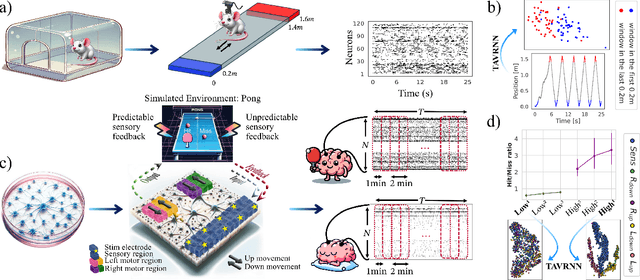

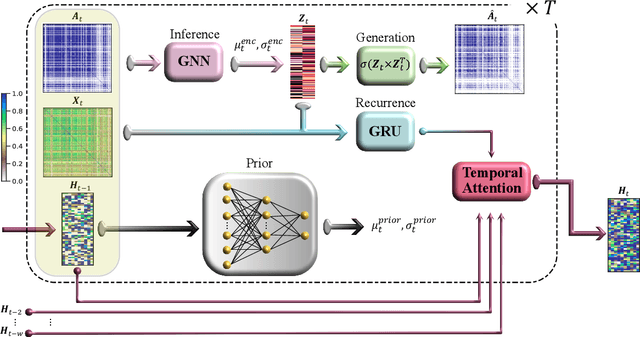

Abstract:We introduce Temporal Attention-enhanced Variational Graph Recurrent Neural Network (TAVRNN), a novel framework for analyzing the evolving dynamics of neuronal connectivity networks in response to external stimuli and behavioral feedback. TAVRNN captures temporal changes in network structure by modeling sequential snapshots of neuronal activity, enabling the identification of key connectivity patterns. Leveraging temporal attention mechanisms and variational graph techniques, TAVRNN uncovers how connectivity shifts align with behavior over time. We validate TAVRNN on two datasets: in vivo calcium imaging data from freely behaving rats and novel in vitro electrophysiological data from the DishBrain system, where biological neurons control a simulated environment during the game of pong. We show that TAVRNN outperforms previous baseline models in classification, clustering tasks and computational efficiency while accurately linking connectivity changes to performance variations. Crucially, TAVRNN reveals that high game performance in the DishBrain system correlates with the alignment of sensory and motor subregion channels, a relationship not evident in earlier models. This framework represents the first application of dynamic graph representation of electrophysiological (neuronal) data from DishBrain system, providing insights into the reorganization of neuronal networks during learning. TAVRNN's ability to differentiate between neuronal states associated with successful and unsuccessful learning outcomes, offers significant implications for real-time monitoring and manipulation of biological neuronal systems.
Biological Neurons Compete with Deep Reinforcement Learning in Sample Efficiency in a Simulated Gameworld
May 27, 2024Abstract:How do biological systems and machine learning algorithms compare in the number of samples required to show significant improvements in completing a task? We compared the learning efficiency of in vitro biological neural networks to the state-of-the-art deep reinforcement learning (RL) algorithms in a simplified simulation of the game `Pong'. Using DishBrain, a system that embodies in vitro neural networks with in silico computation using a high-density multi-electrode array, we contrasted the learning rate and the performance of these biological systems against time-matched learning from three state-of-the-art deep RL algorithms (i.e., DQN, A2C, and PPO) in the same game environment. This allowed a meaningful comparison between biological neural systems and deep RL. We find that when samples are limited to a real-world time course, even these very simple biological cultures outperformed deep RL algorithms across various game performance characteristics, implying a higher sample efficiency. Ultimately, even when tested across multiple types of information input to assess the impact of higher dimensional data input, biological neurons showcased faster learning than all deep reinforcement learning agents.
On Predictive planning and counterfactual learning in active inference
Mar 19, 2024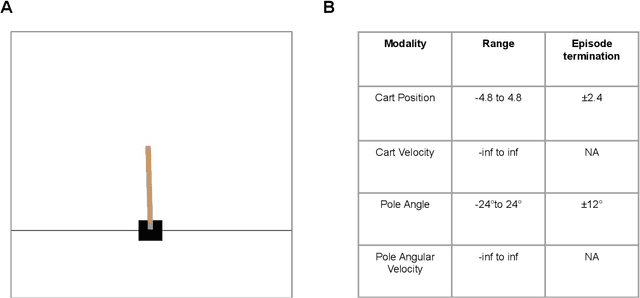
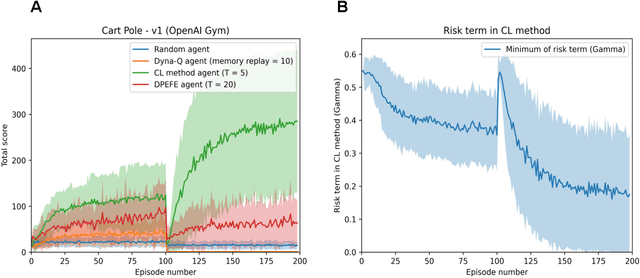
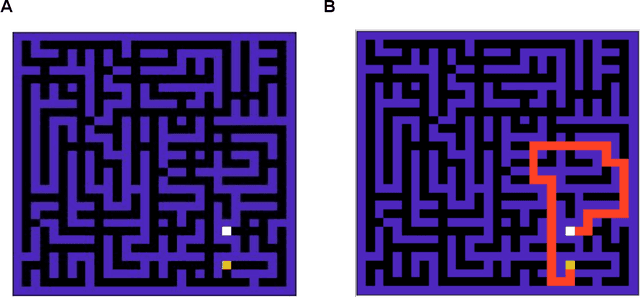
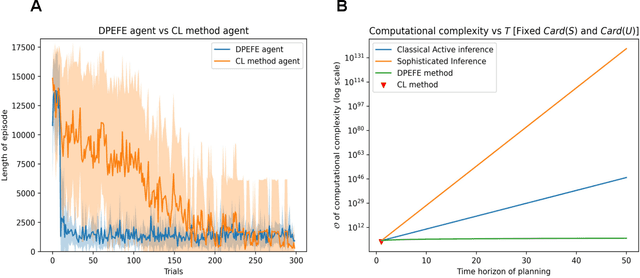
Abstract:Given the rapid advancement of artificial intelligence, understanding the foundations of intelligent behaviour is increasingly important. Active inference, regarded as a general theory of behaviour, offers a principled approach to probing the basis of sophistication in planning and decision-making. In this paper, we examine two decision-making schemes in active inference based on 'planning' and 'learning from experience'. Furthermore, we also introduce a mixed model that navigates the data-complexity trade-off between these strategies, leveraging the strengths of both to facilitate balanced decision-making. We evaluate our proposed model in a challenging grid-world scenario that requires adaptability from the agent. Additionally, our model provides the opportunity to analyze the evolution of various parameters, offering valuable insights and contributing to an explainable framework for intelligent decision-making.
Active Inference and Intentional Behaviour
Dec 16, 2023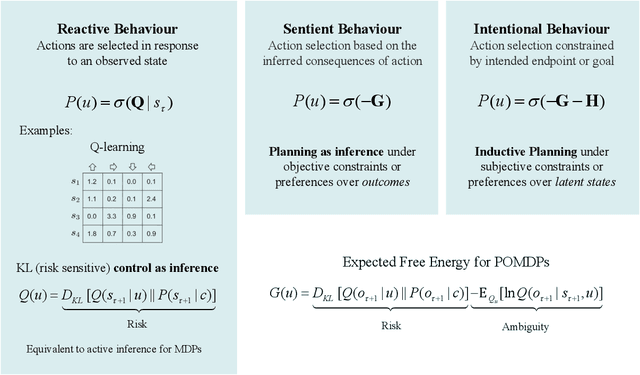
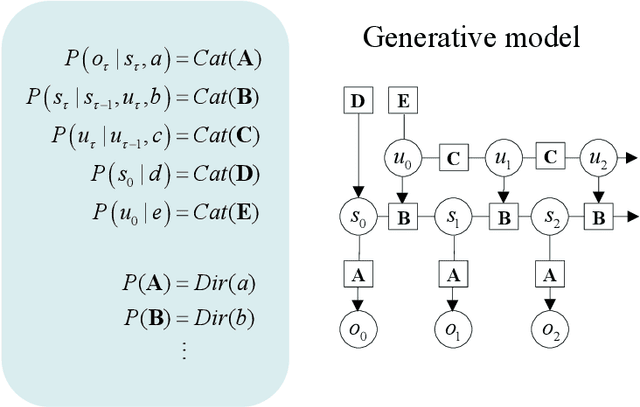

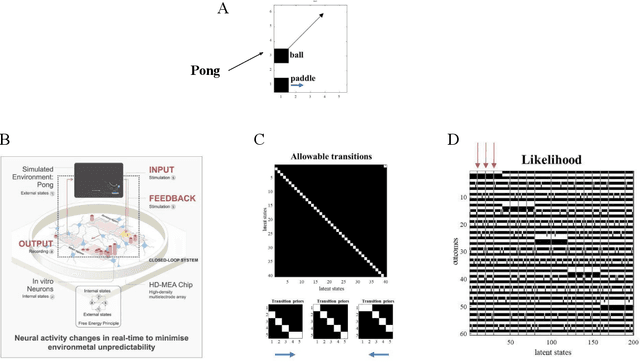
Abstract:Recent advances in theoretical biology suggest that basal cognition and sentient behaviour are emergent properties of in vitro cell cultures and neuronal networks, respectively. Such neuronal networks spontaneously learn structured behaviours in the absence of reward or reinforcement. In this paper, we characterise this kind of self-organisation through the lens of the free energy principle, i.e., as self-evidencing. We do this by first discussing the definitions of reactive and sentient behaviour in the setting of active inference, which describes the behaviour of agents that model the consequences of their actions. We then introduce a formal account of intentional behaviour, that describes agents as driven by a preferred endpoint or goal in latent state-spaces. We then investigate these forms of (reactive, sentient, and intentional) behaviour using simulations. First, we simulate the aforementioned in vitro experiments, in which neuronal cultures spontaneously learn to play Pong, by implementing nested, free energy minimising processes. The simulations are then used to deconstruct the ensuing predictive behaviour, leading to the distinction between merely reactive, sentient, and intentional behaviour, with the latter formalised in terms of inductive planning. This distinction is further studied using simple machine learning benchmarks (navigation in a grid world and the Tower of Hanoi problem), that show how quickly and efficiently adaptive behaviour emerges under an inductive form of active inference.
Linking Symptom Inventories using Semantic Textual Similarity
Sep 08, 2023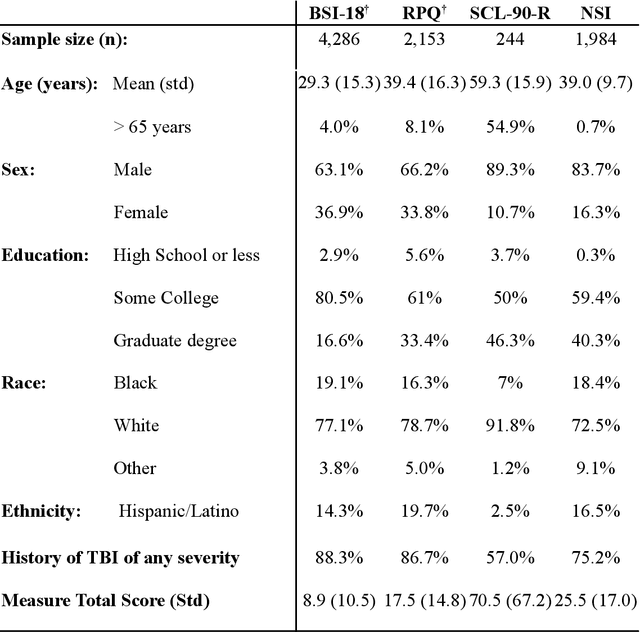
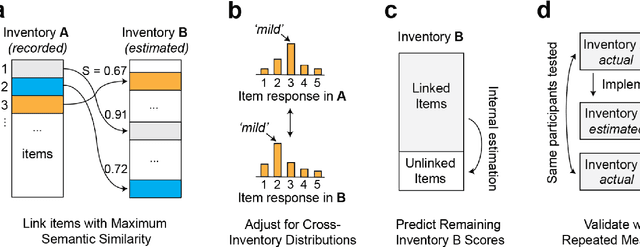
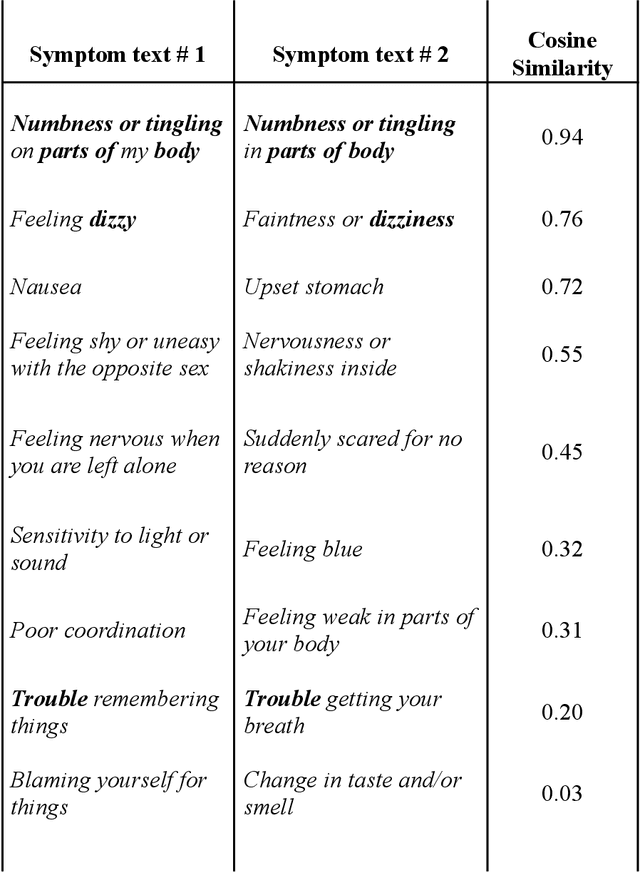
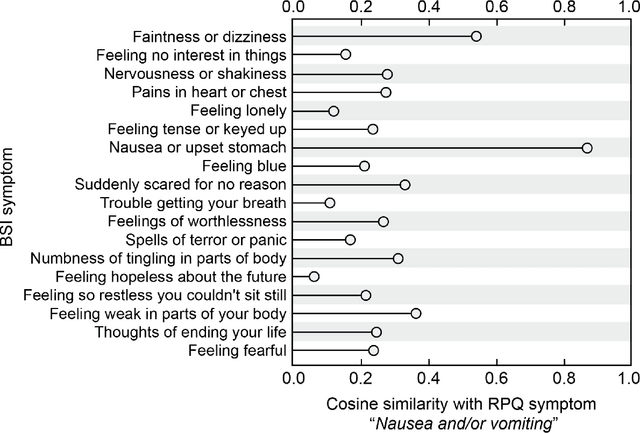
Abstract:An extensive library of symptom inventories has been developed over time to measure clinical symptoms, but this variety has led to several long standing issues. Most notably, results drawn from different settings and studies are not comparable, which limits reproducibility. Here, we present an artificial intelligence (AI) approach using semantic textual similarity (STS) to link symptoms and scores across previously incongruous symptom inventories. We tested the ability of four pre-trained STS models to screen thousands of symptom description pairs for related content - a challenging task typically requiring expert panels. Models were tasked to predict symptom severity across four different inventories for 6,607 participants drawn from 16 international data sources. The STS approach achieved 74.8% accuracy across five tasks, outperforming other models tested. This work suggests that incorporating contextual, semantic information can assist expert decision-making processes, yielding gains for both general and disease-specific clinical assessment.
On efficient computation in active inference
Jul 02, 2023



Abstract:Despite being recognized as neurobiologically plausible, active inference faces difficulties when employed to simulate intelligent behaviour in complex environments due to its computational cost and the difficulty of specifying an appropriate target distribution for the agent. This paper introduces two solutions that work in concert to address these limitations. First, we present a novel planning algorithm for finite temporal horizons with drastically lower computational complexity. Second, inspired by Z-learning from control theory literature, we simplify the process of setting an appropriate target distribution for new and existing active inference planning schemes. Our first approach leverages the dynamic programming algorithm, known for its computational efficiency, to minimize the cost function used in planning through the Bellman-optimality principle. Accordingly, our algorithm recursively assesses the expected free energy of actions in the reverse temporal order. This improves computational efficiency by orders of magnitude and allows precise model learning and planning, even under uncertain conditions. Our method simplifies the planning process and shows meaningful behaviour even when specifying only the agent's final goal state. The proposed solutions make defining a target distribution from a goal state straightforward compared to the more complicated task of defining a temporally informed target distribution. The effectiveness of these methods is tested and demonstrated through simulations in standard grid-world tasks. These advances create new opportunities for various applications.
Unsupervised Representation Learning for 3D MRI Super Resolution with Degradation Adaptation
May 13, 2022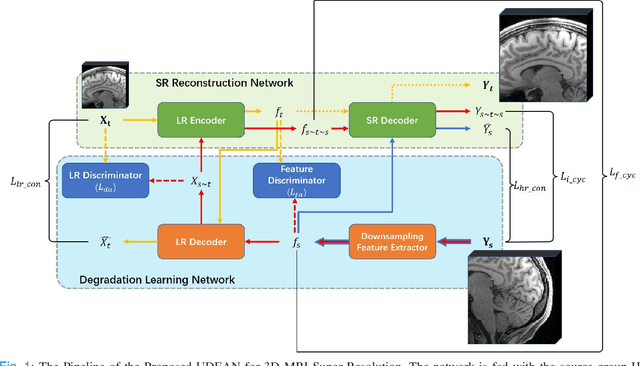
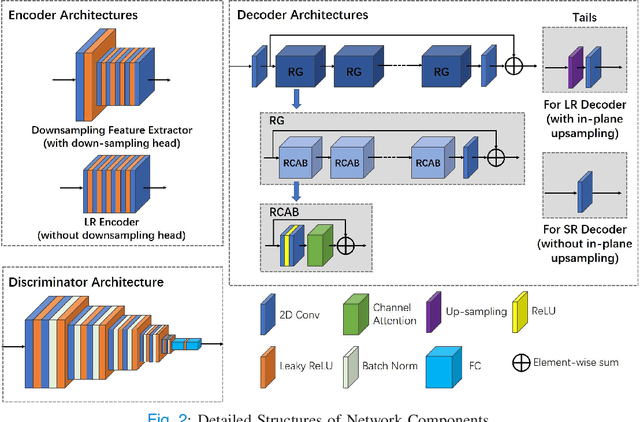
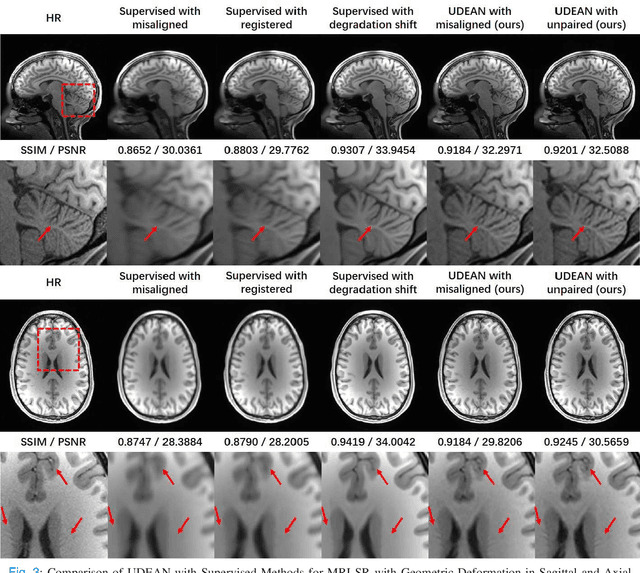
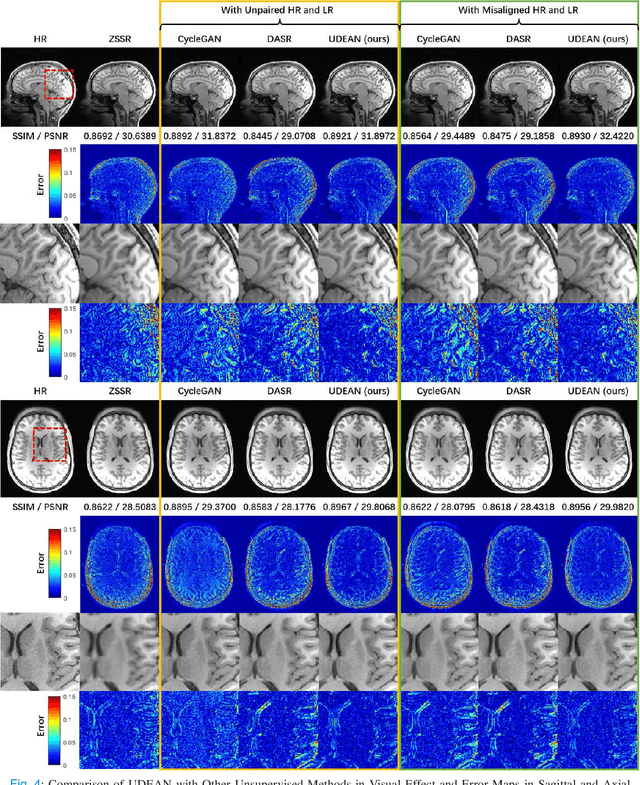
Abstract:High-resolution (HR) MRI is critical in assisting the doctor's diagnosis and image-guided treatment, but is hard to obtain in a clinical setting due to long acquisition time. Therefore, the research community investigated deep learning-based super-resolution (SR) technology to reconstruct HR MRI images with shortened acquisition time. However, training such neural networks usually requires paired HR and low-resolution (LR) in-vivo images, which are difficult to acquire due to patient movement during and between the image acquisition. Rigid movements of hard tissues can be corrected with image-registration, whereas the alignment of deformed soft tissues is challenging, making it impractical to train the neural network with such authentic HR and LR image pairs. Therefore, most of the previous studies proposed SR reconstruction by employing authentic HR images and synthetic LR images downsampled from the HR images, yet the difference in degradation representations between synthetic and authentic LR images suppresses the performance of SR reconstruction from authentic LR images. To mitigate the aforementioned problems, we propose a novel Unsupervised DEgradation Adaptation Network (UDEAN). Our model consists of two components: the degradation learning network and the SR reconstruction network. The degradation learning network downsamples the HR images by addressing the degradation representation of the misaligned or unpaired LR images, and the SR reconstruction network learns the mapping from the downsampled HR images to their original HR images. As a result, the SR reconstruction network can generate SR images from the LR images and achieve comparable quality to the HR images. Experimental results show that our method outperforms the state-of-the-art models and can potentially be applied in real-world clinical settings.
Active Inference for Stochastic Control
Aug 27, 2021
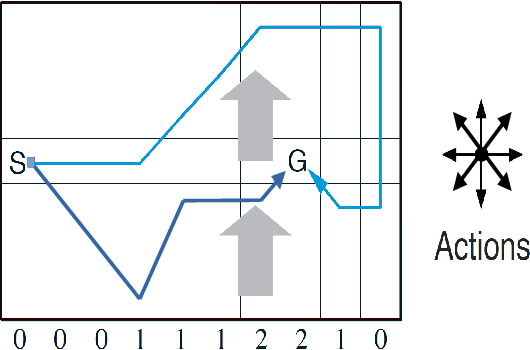

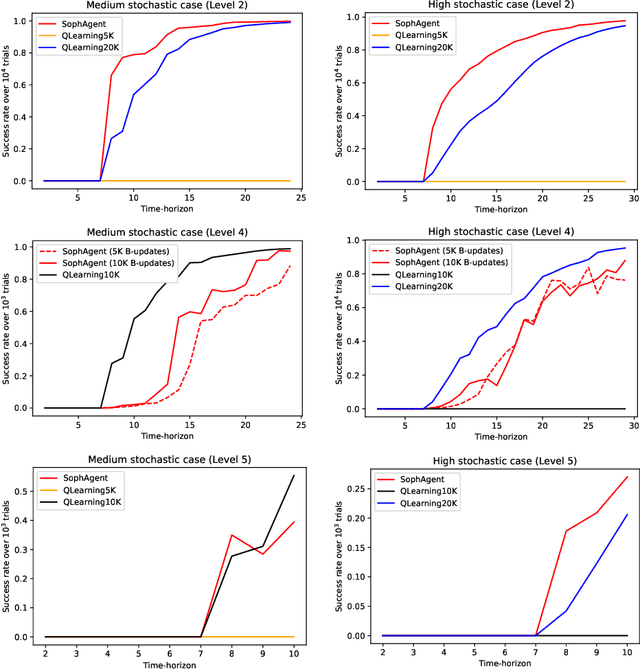
Abstract:Active inference has emerged as an alternative approach to control problems given its intuitive (probabilistic) formalism. However, despite its theoretical utility, computational implementations have largely been restricted to low-dimensional, deterministic settings. This paper highlights that this is a consequence of the inability to adequately model stochastic transition dynamics, particularly when an extensive policy (i.e., action trajectory) space must be evaluated during planning. Fortunately, recent advancements propose a modified planning algorithm for finite temporal horizons. We build upon this work to assess the utility of active inference for a stochastic control setting. For this, we simulate the classic windy grid-world task with additional complexities, namely: 1) environment stochasticity; 2) learning of transition dynamics; and 3) partial observability. Our results demonstrate the advantage of using active inference, compared to reinforcement learning, in both deterministic and stochastic settings.
 Add to Chrome
Add to Chrome Add to Firefox
Add to Firefox Add to Edge
Add to Edge